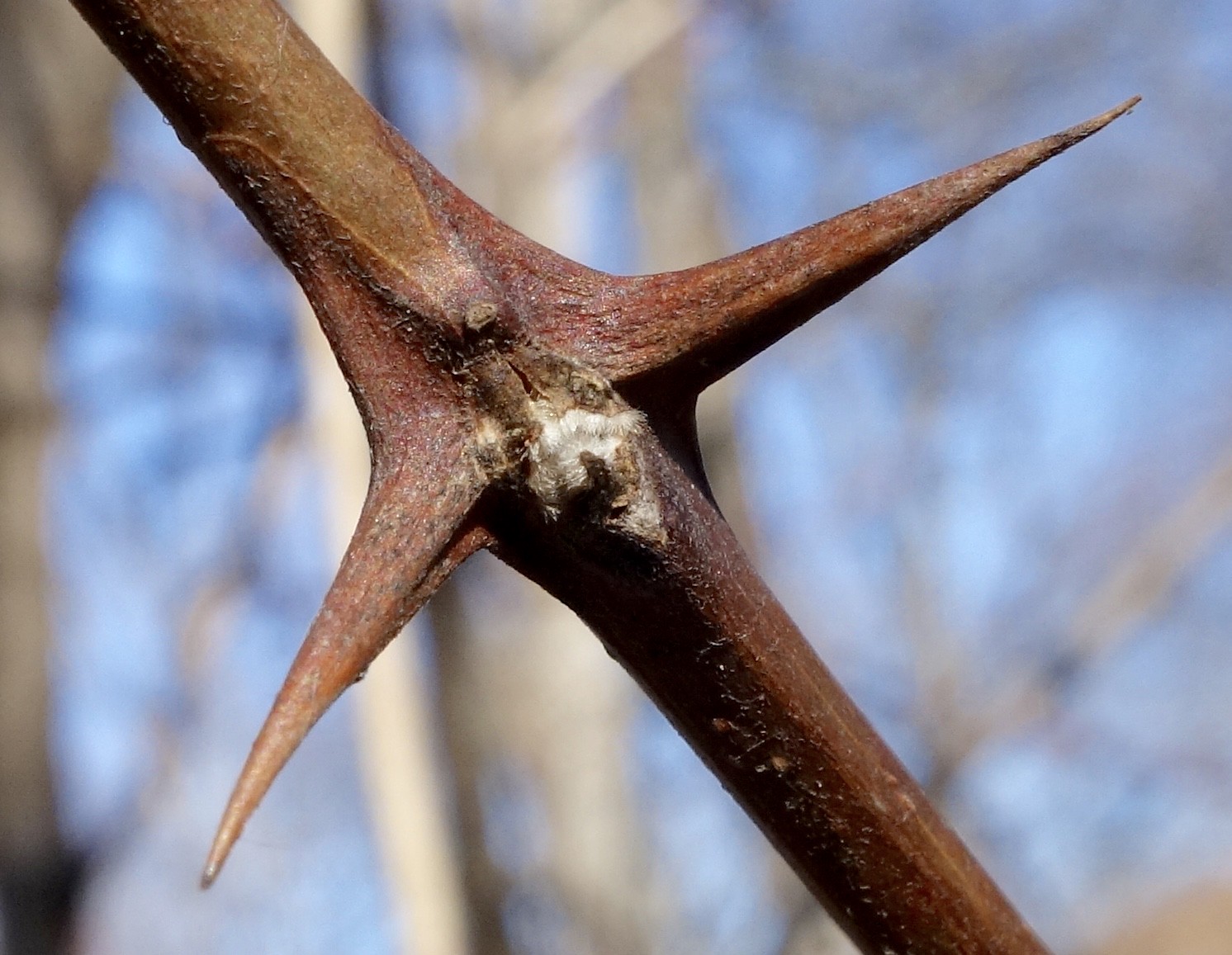When sharp dangerous structures are found in pairs on plants, they are almost certainly “spines” (modifications of leaves or parts of leaves), as opposed to “thorns” (modified shoot systems, part 2) or “prickles” (outgrowths of the epidermis and underlying tissues, part 1). Pictured below, paired spines are found at the point of attachment of the leaf (long gone) to the stem—hence in association with a leaf scar in winter. These three sets of very similar looking paired spines come from three very different species, Robinia x holdtii (58-47*B, left), Eleutherococcus divaricatus (217-96*A, upper right) and Zanthoxylum simulans (1210-70*C, lower right) in three totally different plant families, Fabaceae (legumes), Araliaceae (aralias), and Rutaceae (citruses). All will have the exact same effect if you bump into them.

Each instance represents a separate evolutionary modification of what are called “stipules.” Stipules are typically paired flattened green outgrowths of the leaf base, charged with enveloping and protecting the minute delicate leaf blade (lamina) as it emerges from a bud in the spring (click here for more about stipules). In these three lineages, the originally rather innocuous set of paired stipules were modified through natural selection into a pair of what we call stipular spines—a wonderful example of parallel evolution (similar start point and similar end point)!
